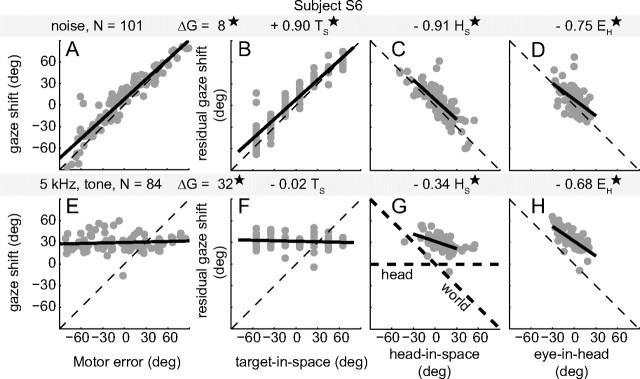Figure 4.
Elevation localization performance to broadband noise (A–D) and the 5 kHz tone (E–H) of listener S6, for all initial eye and head orientations. A, E, Gaze-shift (ΔG) response as a function of gaze-motor error (required gaze shift, TE = TH − EH). Dashed diagonal lines indicate the ideal, accurate response. Solid black lines show the best linear fit to the data. Note the contrast between highly accurate gaze shifts for broadband sounds and highly inaccurate responses for tones. B–D and F–H show the residual effect of a single variable on the gaze shift (after taking into account the other variables through the MLR-analysis) for broadband sounds and tones, respectively. Solid black lines represent the MLR slopes. B, Strong correlation of broadband-evoked gaze shift with target-in-space (TS). C, Strong negative effect of head-in-space orientation (HS). D, Strong negative effect of eye-in-head orientation (EH). For tones, responses are not goal-directed (D), but do vary systematically with HS (G) and EH (H). Diagonal lines with slope −1 indicate the ideal response results. Thick dashed lines in G indicate the predicted influence of head orientation for the head- and world-centered schemes. The coefficients according to the MLR (Eq. 5) are shown above the panels. Values that differ significantly from zero are indicated by an asterisk (*).

